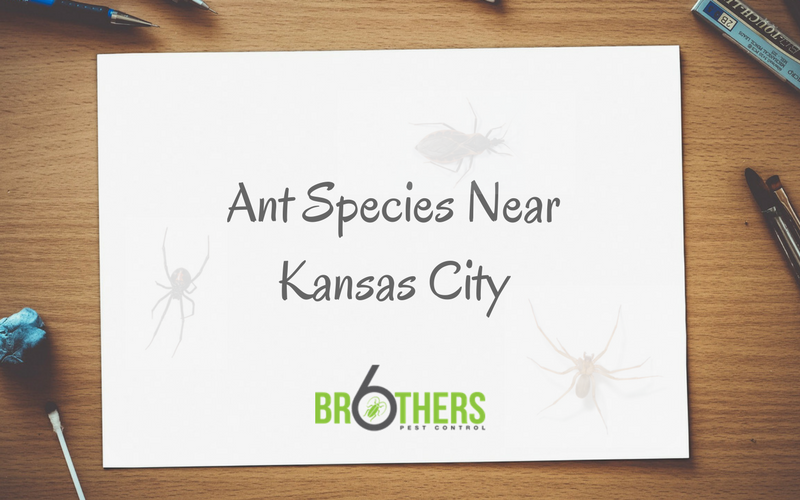The line of ants running through you home seems to never stop. You spray and spray, and still the ants continue their ceaseless marching. Ants are definitely annoying to have around and can be difficult to get rid of. In fact, ants are the number one nuisance pest in the U.S.
Ants and ticks seem to be in the same category, not showing many signs until it’s too late. According to the Kansas City Star, tick species are spreading, with some invasive species being discovered. Ants can be the same way, with Red Imported Fire Ants and Argentine Ants being some of the most common species here in the United States.
The sheer number of ants makes them a force to be reckoned with. There are over 12,000 different species of ants in the world and close to 1,000 in the US alone. One key to helping you know how to get rid of them is to be able to identify what species you are dealing with. There are many species in the Kansas City area, but here are four of the more notable ones.
Carpenter Ant

Size: ¼” – ¾” long… the giants of the North American ants
Identification: Colors range from black to red to burnt orange. Carpenter ants have a pinched waist and long abdomen.
Habitat: They live on dead or decaying wood; Carpenter ants are often found in trees, telephone poles, wood piles, sheds, and even the walls of homes.
Diet: Plant juices, fungus, scraps, other insects; They do not eat wood like termites, but rather tunnel through it.
Impact: Carpenter ants will tunnel through weak wood and can be destructive to homes and property if not taken care of. While they do not carry diseases, the bite of a carpenter ant can be painful, and the formic acid spray that they emit can irritate skin and eyes.
Argentine Ant

Size: 1/10”
Identification: Dark brown or black with segmented bodies
Habitat: Originally native to South America, these tiny ants can now be found in most southern states in the U.S. including Kansas and Missouri. The can nest in homes or offices, foundations, siding, etc., but they are drawn to wet environments near a food source.
Diet: They prefer sweet foods, but will also eat things like meats and fats.
Impact: Argentine ants are not dangerous to humans, but they can be difficult to eliminate because they have become immune to certain pesticides
Red Imported Fire Ant (RIFA)

Size: ⅛” – ¼” long
Identification: Reddish-brown with oval, segmented body and a visible stinger
Habitat: Originally believed to be brought from Brazil, they are now a problem in many southern states. They build medium sized dirt mounds (18”X18”) near homes and structures and will often venture indoors to forage.
Diet: Mostly vegetation
Impact: RIFA can damage crops and gardens from their mound building and foraging activities, causing monetary losses for farmers. They are also an aggressive species, so when they are disturbed, they will bite and sting. These stings can be painful and cause swelling, white pustules, and allergic reactions in some individuals. RIFA can also nest in electrical circuitry, which can cause electrical shorts and millions of dollars worth of damage yearly.
Odorous House Ant

Size: ⅛”
Identification: Brown to black with a segmented, oval body. They also have a rotten coconut odor when crushed.
Habitat: They often nest in or around houses, which is why they got their name. When not indoors, they can live in exposed soil, under rocks, or under other debris.
Diet: Odorous house ants prefer sugary substances, nectar, and honeydew from aphids
Impact: They are not harmful, but they can contaminate food with their waste and leave behind a foul smell.
If you need help identifying or treating the ants that are causing a nuisance in your home, call us now for ant control services. We can help you eliminate the entire ant nest and put a stop to that line of ants that are marching through your home.













